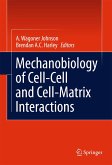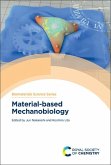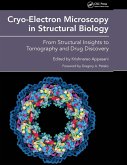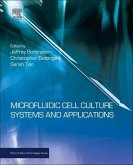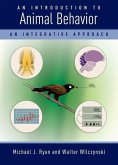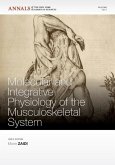Integrative Mechanobiology
Micro- And Nano- Techniques in Cell Mechanobiology
Herausgeber: Sun, Yu; Simmons, Craig A; Kim, Deok-Ho
Integrative Mechanobiology
Micro- And Nano- Techniques in Cell Mechanobiology
Herausgeber: Sun, Yu; Simmons, Craig A; Kim, Deok-Ho
- Gebundenes Buch
- Merkliste
- Auf die Merkliste
- Bewerten Bewerten
- Teilen
- Produkt teilen
- Produkterinnerung
- Produkterinnerung
Experts describe state-of-the-art micro-nano techniques for cell mechanobiology and introduce the most recent advances in the field.
Andere Kunden interessierten sich auch für
![Mechanobiology of Cell-Cell and Cell-Matrix Interactions Mechanobiology of Cell-Cell and Cell-Matrix Interactions]() Mechanobiology of Cell-Cell and Cell-Matrix Interactions121,99 €
Mechanobiology of Cell-Cell and Cell-Matrix Interactions121,99 €![Material-Based Mechanobiology Material-Based Mechanobiology]() Material-Based Mechanobiology271,99 €
Material-Based Mechanobiology271,99 €![Cryo-Electron Microscopy in Structural Biology Cryo-Electron Microscopy in Structural Biology]() Cryo-Electron Microscopy in Structural Biology272,99 €
Cryo-Electron Microscopy in Structural Biology272,99 €![Microfluidic Cell Culture Systems Microfluidic Cell Culture Systems]() Microfluidic Cell Culture Systems209,99 €
Microfluidic Cell Culture Systems209,99 €![An Introduction to Animal Behavior: An Integrative Approach An Introduction to Animal Behavior: An Integrative Approach]() Michael RyanAn Introduction to Animal Behavior: An Integrative Approach19,99 €
Michael RyanAn Introduction to Animal Behavior: An Integrative Approach19,99 €![Molecular and Integrative Physiology of the Musculoskeletal System, Volume 1211 Molecular and Integrative Physiology of the Musculoskeletal System, Volume 1211]() Molecular and Integrative Physiology of the Musculoskeletal System, Volume 1211164,99 €
Molecular and Integrative Physiology of the Musculoskeletal System, Volume 1211164,99 €![A Brief History of Intelligence A Brief History of Intelligence]() Max Solomon BennettA Brief History of Intelligence29,62 €
Max Solomon BennettA Brief History of Intelligence29,62 €-
-
-
Experts describe state-of-the-art micro-nano techniques for cell mechanobiology and introduce the most recent advances in the field.
Hinweis: Dieser Artikel kann nur an eine deutsche Lieferadresse ausgeliefert werden.
Hinweis: Dieser Artikel kann nur an eine deutsche Lieferadresse ausgeliefert werden.
Produktdetails
- Produktdetails
- Verlag: Cambridge University Press
- Seitenzahl: 382
- Erscheinungstermin: 13. Januar 2016
- Englisch
- Abmessung: 255mm x 174mm x 22mm
- Gewicht: 889g
- ISBN-13: 9781107078390
- ISBN-10: 1107078393
- Artikelnr.: 43115457
- Herstellerkennzeichnung
- Libri GmbH
- Europaallee 1
- 36244 Bad Hersfeld
- gpsr@libri.de
- Verlag: Cambridge University Press
- Seitenzahl: 382
- Erscheinungstermin: 13. Januar 2016
- Englisch
- Abmessung: 255mm x 174mm x 22mm
- Gewicht: 889g
- ISBN-13: 9781107078390
- ISBN-10: 1107078393
- Artikelnr.: 43115457
- Herstellerkennzeichnung
- Libri GmbH
- Europaallee 1
- 36244 Bad Hersfeld
- gpsr@libri.de
Part I. Micro/Nano Techniques in Cell Mechanobiology: 1. Nanotechnologies
and FRET imaging in live cells Eddie Y. Chung, Qin Qin, Agamoni
Bhattacharyya, Shaoying Lu and Yingxiao Wang; 2. Electron microscopy and
three-dimensional single-particle analysis as tools for understanding the
structural basis of mechanobiology Niels Volkmann and Dorit Hanein; 3.
Stretchable micropost array cytometry: a powerful tool for cell mechanics
and mechanobiology research Yue Shao, Shinuo Weng and Jianping Fu; 4.
Microscale generation of dynamic forces in cell culture systems Christopher
Moraes, Luke A. MacQueen, Yu Sun and Craig A. Simmons; 5. Multi-scale
topographical approaches for cell mechanobiology studies Koichiro Uto,
Elliot Fisher, Hong-Nam Kim, Chang Ho Seo and Deok-Ho Kim; 6. Hydrogels
with dynamically tunable properties Murat Guvendiren and Jason A. Burdick;
7. Micro-engineered tools for studying cell migration in electric fields
Jiandong Wu and Francis Lin; 8. Laser ablation to investigate cell and
tissue mechanics in vivo Teresa Zulueta-Coarasa and Rodrigo
Fernandez-Gonzalez; 9. Computational image analysis techniques for cell
mechanobiology Ge Yang and Hao-Chih Lee; 10. Micro- and nanotools to probe
cancer cell mechanics and mechanobiology Yasaman Nematbakhsh and Chwee Teck
Lim; 11. Stimuli-responsive polymeric substrates for cell-matrix
mechanobiology Mitsuhiro Ebara and Koichiro Uto; Part II. Recent Progress
in Cell Mechanobiology: 12. Forces of nature: understanding the role of
mechanotransduction in stem cell differentiation Andrew W. Holle, Jennifer
L. Young and Yu Suk Choi; 13. Heart valve mechanobiology Craig Simmons; 14.
Bone cell mechanobiology using micro- and nano-techniques Chao Liu, Kevin
Middleton and Lidan You; 15. Molecular mechanisms of cellular
mechanotransduction in wound healing Vincent F. Fiore, Dwight M. Chambers
and Thomas H. Barker; 16. Micropost arrays as a means to assess cardiac
muscle cells Andrea Leonard, Marita L. Rodriguez and Nathan J. Sniadecki;
17. Micro/nanofabrication for the study of biochemical and biomechanical
regulation of T cell activation Hye Mi Kim and Junsang Doh; 18. Study of
tumor angiogenesis using microfluidic approaches Yoojin Shin, Sewoon Han,
Hyo-Eun Jeong, Jeong Ah Kim, Jessie S. Jeon and Sid Chung; 19.
Neuromechanobiology of the brain: mechanics of neuronal structure,
function, and pathophysiology Jerel Mueller and William Tyler.
and FRET imaging in live cells Eddie Y. Chung, Qin Qin, Agamoni
Bhattacharyya, Shaoying Lu and Yingxiao Wang; 2. Electron microscopy and
three-dimensional single-particle analysis as tools for understanding the
structural basis of mechanobiology Niels Volkmann and Dorit Hanein; 3.
Stretchable micropost array cytometry: a powerful tool for cell mechanics
and mechanobiology research Yue Shao, Shinuo Weng and Jianping Fu; 4.
Microscale generation of dynamic forces in cell culture systems Christopher
Moraes, Luke A. MacQueen, Yu Sun and Craig A. Simmons; 5. Multi-scale
topographical approaches for cell mechanobiology studies Koichiro Uto,
Elliot Fisher, Hong-Nam Kim, Chang Ho Seo and Deok-Ho Kim; 6. Hydrogels
with dynamically tunable properties Murat Guvendiren and Jason A. Burdick;
7. Micro-engineered tools for studying cell migration in electric fields
Jiandong Wu and Francis Lin; 8. Laser ablation to investigate cell and
tissue mechanics in vivo Teresa Zulueta-Coarasa and Rodrigo
Fernandez-Gonzalez; 9. Computational image analysis techniques for cell
mechanobiology Ge Yang and Hao-Chih Lee; 10. Micro- and nanotools to probe
cancer cell mechanics and mechanobiology Yasaman Nematbakhsh and Chwee Teck
Lim; 11. Stimuli-responsive polymeric substrates for cell-matrix
mechanobiology Mitsuhiro Ebara and Koichiro Uto; Part II. Recent Progress
in Cell Mechanobiology: 12. Forces of nature: understanding the role of
mechanotransduction in stem cell differentiation Andrew W. Holle, Jennifer
L. Young and Yu Suk Choi; 13. Heart valve mechanobiology Craig Simmons; 14.
Bone cell mechanobiology using micro- and nano-techniques Chao Liu, Kevin
Middleton and Lidan You; 15. Molecular mechanisms of cellular
mechanotransduction in wound healing Vincent F. Fiore, Dwight M. Chambers
and Thomas H. Barker; 16. Micropost arrays as a means to assess cardiac
muscle cells Andrea Leonard, Marita L. Rodriguez and Nathan J. Sniadecki;
17. Micro/nanofabrication for the study of biochemical and biomechanical
regulation of T cell activation Hye Mi Kim and Junsang Doh; 18. Study of
tumor angiogenesis using microfluidic approaches Yoojin Shin, Sewoon Han,
Hyo-Eun Jeong, Jeong Ah Kim, Jessie S. Jeon and Sid Chung; 19.
Neuromechanobiology of the brain: mechanics of neuronal structure,
function, and pathophysiology Jerel Mueller and William Tyler.
Part I. Micro/Nano Techniques in Cell Mechanobiology: 1. Nanotechnologies
and FRET imaging in live cells Eddie Y. Chung, Qin Qin, Agamoni
Bhattacharyya, Shaoying Lu and Yingxiao Wang; 2. Electron microscopy and
three-dimensional single-particle analysis as tools for understanding the
structural basis of mechanobiology Niels Volkmann and Dorit Hanein; 3.
Stretchable micropost array cytometry: a powerful tool for cell mechanics
and mechanobiology research Yue Shao, Shinuo Weng and Jianping Fu; 4.
Microscale generation of dynamic forces in cell culture systems Christopher
Moraes, Luke A. MacQueen, Yu Sun and Craig A. Simmons; 5. Multi-scale
topographical approaches for cell mechanobiology studies Koichiro Uto,
Elliot Fisher, Hong-Nam Kim, Chang Ho Seo and Deok-Ho Kim; 6. Hydrogels
with dynamically tunable properties Murat Guvendiren and Jason A. Burdick;
7. Micro-engineered tools for studying cell migration in electric fields
Jiandong Wu and Francis Lin; 8. Laser ablation to investigate cell and
tissue mechanics in vivo Teresa Zulueta-Coarasa and Rodrigo
Fernandez-Gonzalez; 9. Computational image analysis techniques for cell
mechanobiology Ge Yang and Hao-Chih Lee; 10. Micro- and nanotools to probe
cancer cell mechanics and mechanobiology Yasaman Nematbakhsh and Chwee Teck
Lim; 11. Stimuli-responsive polymeric substrates for cell-matrix
mechanobiology Mitsuhiro Ebara and Koichiro Uto; Part II. Recent Progress
in Cell Mechanobiology: 12. Forces of nature: understanding the role of
mechanotransduction in stem cell differentiation Andrew W. Holle, Jennifer
L. Young and Yu Suk Choi; 13. Heart valve mechanobiology Craig Simmons; 14.
Bone cell mechanobiology using micro- and nano-techniques Chao Liu, Kevin
Middleton and Lidan You; 15. Molecular mechanisms of cellular
mechanotransduction in wound healing Vincent F. Fiore, Dwight M. Chambers
and Thomas H. Barker; 16. Micropost arrays as a means to assess cardiac
muscle cells Andrea Leonard, Marita L. Rodriguez and Nathan J. Sniadecki;
17. Micro/nanofabrication for the study of biochemical and biomechanical
regulation of T cell activation Hye Mi Kim and Junsang Doh; 18. Study of
tumor angiogenesis using microfluidic approaches Yoojin Shin, Sewoon Han,
Hyo-Eun Jeong, Jeong Ah Kim, Jessie S. Jeon and Sid Chung; 19.
Neuromechanobiology of the brain: mechanics of neuronal structure,
function, and pathophysiology Jerel Mueller and William Tyler.
and FRET imaging in live cells Eddie Y. Chung, Qin Qin, Agamoni
Bhattacharyya, Shaoying Lu and Yingxiao Wang; 2. Electron microscopy and
three-dimensional single-particle analysis as tools for understanding the
structural basis of mechanobiology Niels Volkmann and Dorit Hanein; 3.
Stretchable micropost array cytometry: a powerful tool for cell mechanics
and mechanobiology research Yue Shao, Shinuo Weng and Jianping Fu; 4.
Microscale generation of dynamic forces in cell culture systems Christopher
Moraes, Luke A. MacQueen, Yu Sun and Craig A. Simmons; 5. Multi-scale
topographical approaches for cell mechanobiology studies Koichiro Uto,
Elliot Fisher, Hong-Nam Kim, Chang Ho Seo and Deok-Ho Kim; 6. Hydrogels
with dynamically tunable properties Murat Guvendiren and Jason A. Burdick;
7. Micro-engineered tools for studying cell migration in electric fields
Jiandong Wu and Francis Lin; 8. Laser ablation to investigate cell and
tissue mechanics in vivo Teresa Zulueta-Coarasa and Rodrigo
Fernandez-Gonzalez; 9. Computational image analysis techniques for cell
mechanobiology Ge Yang and Hao-Chih Lee; 10. Micro- and nanotools to probe
cancer cell mechanics and mechanobiology Yasaman Nematbakhsh and Chwee Teck
Lim; 11. Stimuli-responsive polymeric substrates for cell-matrix
mechanobiology Mitsuhiro Ebara and Koichiro Uto; Part II. Recent Progress
in Cell Mechanobiology: 12. Forces of nature: understanding the role of
mechanotransduction in stem cell differentiation Andrew W. Holle, Jennifer
L. Young and Yu Suk Choi; 13. Heart valve mechanobiology Craig Simmons; 14.
Bone cell mechanobiology using micro- and nano-techniques Chao Liu, Kevin
Middleton and Lidan You; 15. Molecular mechanisms of cellular
mechanotransduction in wound healing Vincent F. Fiore, Dwight M. Chambers
and Thomas H. Barker; 16. Micropost arrays as a means to assess cardiac
muscle cells Andrea Leonard, Marita L. Rodriguez and Nathan J. Sniadecki;
17. Micro/nanofabrication for the study of biochemical and biomechanical
regulation of T cell activation Hye Mi Kim and Junsang Doh; 18. Study of
tumor angiogenesis using microfluidic approaches Yoojin Shin, Sewoon Han,
Hyo-Eun Jeong, Jeong Ah Kim, Jessie S. Jeon and Sid Chung; 19.
Neuromechanobiology of the brain: mechanics of neuronal structure,
function, and pathophysiology Jerel Mueller and William Tyler.


